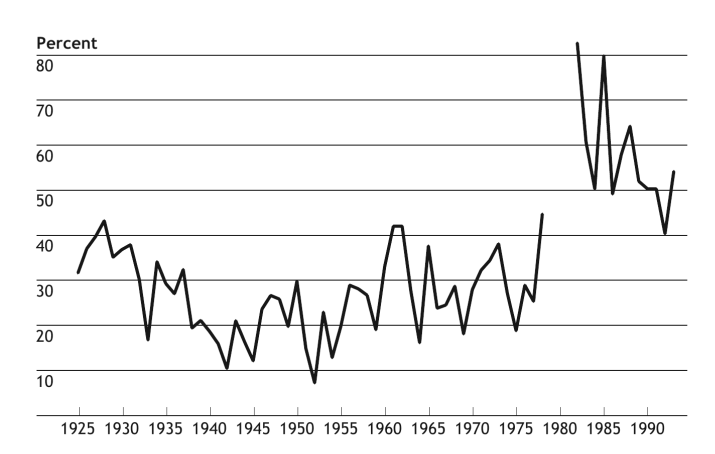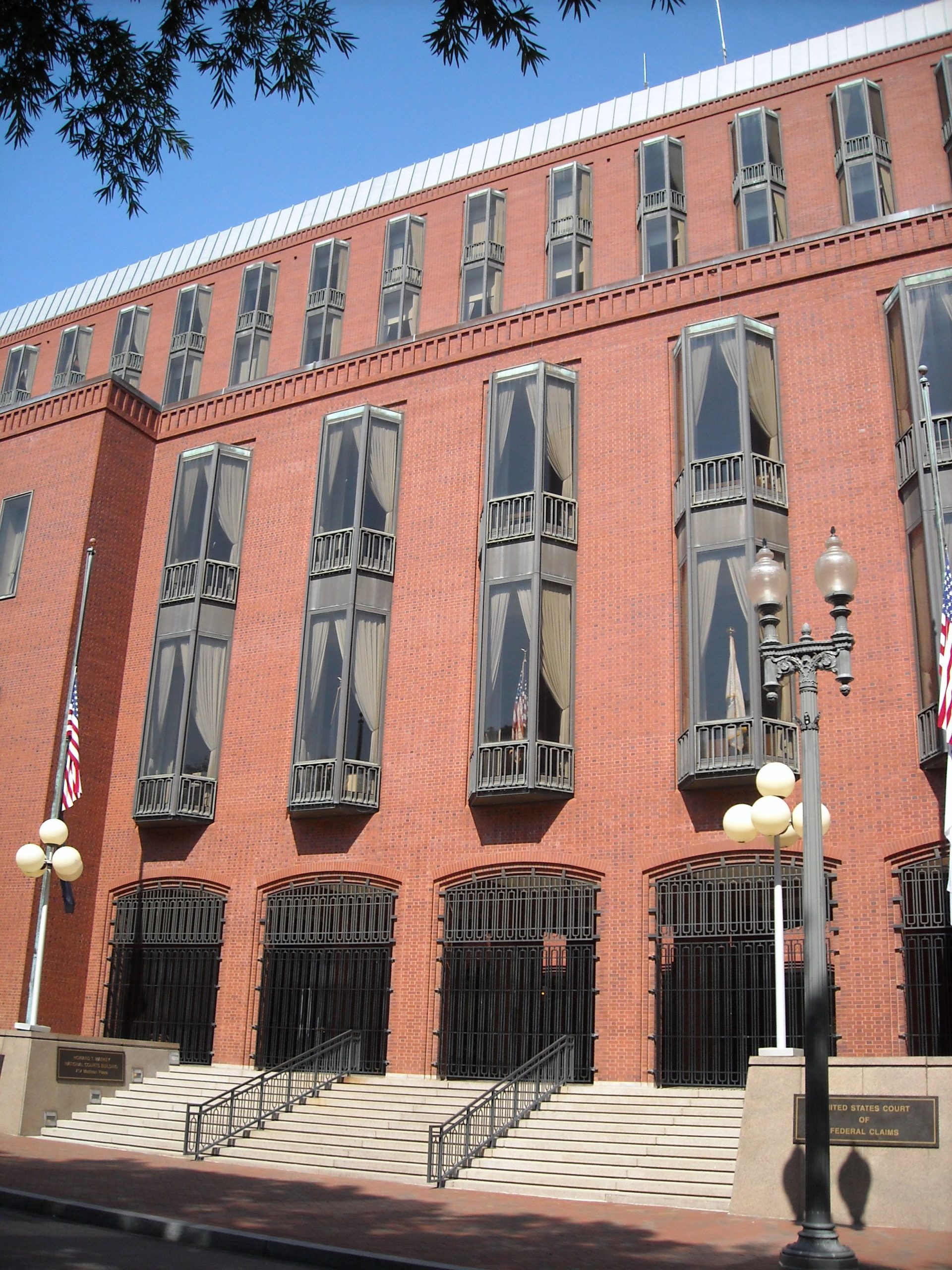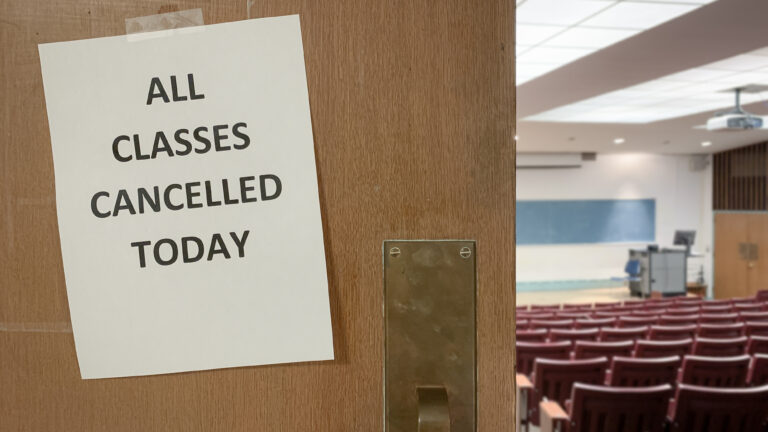How a rogue appeals court wrecked the patent system (original) (raw)
Federal Circuit Appeals Court marks 30 years of spreading the "patent gospel."
Judges of the United States Court of Appeals for the Federal Circuit on October 1, 1982, the day they were sworn in by Chief Justice Burger. In the front row are Circuit Judge Giles S. Rich, Chief Judge Howard T. Markey, Chief Justice Warren E. Burger, and Circuit Judge Daniel M. Friedman. Credit: Courtesy of the Federal Circuit Historical Society.
Judges of the United States Court of Appeals for the Federal Circuit on October 1, 1982, the day they were sworn in by Chief Justice Burger. In the front row are Circuit Judge Giles S. Rich, Chief Judge Howard T. Markey, Chief Justice Warren E. Burger, and Circuit Judge Daniel M. Friedman. Credit: Courtesy of the Federal Circuit Historical Society.
In 1972, the Court of Customs and Patent Appeals (CCPA) got a new chief judge named Thomas Markey. At Markey's investiture ceremony, patent attorney Donald Dunner spoke of the "anguish of the patent bar about the treatment of patents in various federal courts." The CCPA, a DC-based court that heard appeals from the US Patent & Trademark Office, was considered to be relatively pro-patent—but other federal appeals courts had jurisdiction over actual patent lawsuits and tended to be friendlier to patent defendants. Even worse, in Dunner's view, the Supreme Court itself seemed unfriendly to patent holders.
This sad state of affairs made it a bad time to be a patent attorney. Because patents were frequently invalidated by the courts, companies filed many fewer applications for them than they do today. Patents were seen as a backwater in the legal profession. Dunner urged Markey to inspire "his associates on this bench to spread the patent gospel to their sisters and brothers on the other federal benches."
A decade later, the patent bar's anguish would turn to joy as Congress merged the CCPA with another court to create the US Court of Appeals for the Federal Circuit. The Federal Circuit would be just as patent-friendly as the CCPA, but unlike its predecessor, the Federal Circuit was handed jurisdiction over all patent appeals, including the lawsuits that had previously been handled by other courts. On October 1, 1982, Judge Markey became the chief judge of the new court and set to work to remake patent law.
No institution is more responsible for the recent explosion of patent litigation in the software industry, the rise of patent trolls, and the proliferation of patent thickets than the United States Court of Appeals for the Federal Circuit. The patent court's thirtieth birthday this week is a good time to ask whether it was a mistake to give the nation's most patent-friendly appeals court such broad authority over the patent system.
The patent lawyers' court
Patent scholars Adam Jaffe and Josh Lerner tell a story in their 2004 book Innovation and Its Discontents that illustrates the problem Congress was trying to solve with the creation of the Federal Circuit. Every Tuesday at noon, a crowd would gather at the patent office awaiting the week's list of issued patents.
As soon as a patent was issued, a representative for its owner would rush to the telephone and order a lawyer stationed in a patent-friendly jurisdiction such as Kansas City to file an infringement lawsuit against the company's competitors. Meanwhile, representatives for the competitors would rush to the telephone as well. They would call their own lawyers in patent-skeptical jurisdictions like San Francisco and urge them to file a lawsuit seeking to invalidate the patent. Time was of the essence because the two cases would eventually be consolidated, and the court that ultimately heard the case usually depended on which filing had an earlier timestamp.
By 1982, concerns about the lack of uniformity in patent law had become widespread. Observers were also worried that generalist judges lacked expertise to handle the complexities of patent law. And so Congress combined the CCPA with the Court of Claims (which handled lawsuits against the federal government) to create this new court, the United States Court of Appeals for the Federal Circuit.
President Ronald Reagan signs the Federal Courts Improvement Act, which created the United States Court of Appeals for the Federal Circuit, on April 2, 1982.
President Ronald Reagan signs the Federal Courts Improvement Act, which created the United States Court of Appeals for the Federal Circuit, on April 2, 1982. Credit: Courtesy of the Federal Circuit Historical Society
The new court had exclusive jurisdiction over patent appeals. Patent lawsuits were still heard by trial courts across the country, but when the trial courts' rulings were appealed, they would no longer go to one of the 12 geographically-based appeals courts that handle most other appellate issues. Instead, all patent cases would be heard by the Federal Circuit.
"Effectively reversing some major precedents"
By definition, this accomplished Congress's goals of making patent law more uniform and bringing greater "expertise" to patent issues. But it had an important side effect—making the law more favorable to patent holders.
Theoretically, the pro-patent leanings of the Federal Circuit should have been checked by a more skeptical Supreme Court. In practice however, the patent court had a great deal of autonomy.
"It is not common in the life of the law in America for a lower court and a major segment of its bar to take on the nation's highest court, effectively reversing some major precedents or at least substantially mitigating their impact," notes Steven Flanders in a recent history of the patent court. "Yet this was done."
The Federal Circuit, he said, also took on "the quieter and subtler effort to re-educate trial judges throughout the judiciary, to make them friendlier to patent-holders (or at least to the system of patents) as well." (Flanders, it should be noted, is an avowed supporter of the Federal Circuit and its efforts to reshape patent law).
This dismissive attitude toward Supreme Court precedents apparently survives to this day among patent lawyers. In the wake of this year's decision limiting patents on the practice of medicine, patent attorney Gene Quinn wondered, "How long will it take the Federal Circuit to overrule this inexplicable nonsense?" Obviously, the Federal Circuit can't "overrule" a Supreme Court decision. But with enough persistence, it can, and often does, subvert the principles enunciated by the nation's highest court. And when it does so, it almost always works in the direction of making patents easier to obtain and enforce.
Making the law safe for patent holders
In an ideal world, personal biases would be irrelevant to judging. The job of a federal judge is to fairly apply the Constitution and federal statutes to particular cases. If the law were perfectly clear and unambiguous, it would be irrelevant who was put in charge of interpreting it.
Of course, law doesn't actually work that way. Congress has defined patent law using general terms like "obvious," "novel," and "process." The courts give concrete meaning to those terms through a series of precedents. Hence, the biases of a court can have a significant impact on how the law is interpreted.
One of the clearest signs of the Federal Circuit's impact on patent law can be seen in the following chart from Jaffe and Lerner's Innovation and Its Discontents:
Share of patents found valid and infringed on appeal.
Share of patents found valid and infringed on appeal.
In the two decades before the creation of the Federal Circuit, appeals courts sided with patent holders in only 20 to 40 percent of cases. Such a low rate would have caused potential patent plaintiffs to think twice about filing a lawsuit using a weak patent.
In contrast, the Federal Circuit sided with patent holders more than 80 percent of the time during its first year on the bench. And it would continue siding with patent holders for the next decade. As companies saw the opportunity—or the threat—posed by this newly permissive patent regime, the number of patent applications, granted patents, and patent lawsuits all began to soar.
The Federal Circuit tilted the playing field in favor of patent holders in so many ways that it would be tedious to list them all. Two examples will suffice. First, the court watered down the rule against obvious patents. Supreme Court precedents prior to the creation of the Federal Circuit held that merely combining two previously-known technologies in a straightforward fashion was too obvious to merit patent protection. To be patent eligible, the Supreme Court held, an invention needed to be "greater than the sum of its parts."
The Court of Appeals for the Federal Circuit works from the Howard T. Markey building, which is named after the Federal Circuit's first chief judge.
The Court of Appeals for the Federal Circuit works from the Howard T. Markey building, which is named after the Federal Circuit's first chief judge. Credit: AgnosticPreachersKid
The Federal Circuit developed a more permissive rule that only allowed a combination of known components to be declared obvious if there was specific documentation that someone had suggested that combination prior to the patent application. The court adopted this rule to guard against the danger that hindsight bias would lead people to over-estimate an idea's obviousness. But the court seemed less concerned with the possibility that some combinations are so obvious that no one would bother writing them down.
The Federal Circuit also effectively overruled the Supreme Court on the question of which types of inventions were eligible for patent protection. As we've written before, software was generally considered to be ineligible for patent protection based on a trio of Supreme Court decisions handed down in the decade before the Federal Circuit was created.
Yet the Federal Circuit gradually reversed the rule against patenting software. The process culminated in the infamous 1998 decision of State Street Bank v. Signature Financial Group, which held that a strategy for managing a mutual fund using a computer was eligible for patent protection. The ruling made it clear that, in the Federal Circuit's view, no practical boundaries existed on software patents. It also opened the door to patents on "business methods," which had previously been seen as off-limits.
These decisions opened the floodgates for patents on software. Microsoft received just five patents during the 1980s and 1,116 patents during the 1990s, for instance. Between 2000 and 2009? The company received 12,330 patents, more than ten times the amount.
The Supreme Court steps in
The Federal Circuit was able to reshape patent law in part because the Supreme Court took a hands-off approach to the subject during the new court's first two decades. The high court rarely reviewed Federal Circuit decisions and most of the cases it did take were focused on jurisdictional questions rather than the substance of patent law.
But by the turn of the millennium, the Federal Circuit's patent-friendly stance had begun to generate a wave of patent litigation and bad press so large that it couldn't be ignored. Research would eventually find that by the turn of the century, patent litigation had become so expensive that the patent system was actually acting as a net disincentive to innovation outside of the pharmaceutical industry. The same researchers estimated that patent trolls cost the economy between $29 billion and $83 billion per year.
So, under newly-appointed Chief Justice John Roberts, the Supreme Court stepped up its oversight of the Federal Circuit's work. The justices did not like what they found. Between 2006 and 2008, the Supreme Court decided at least four major patent cases. In all four cases, the high court overruled a patent-friendly decision from the Federal Circuit. Three of the rulings were unanimous; the fourth was decided 7-1.
In one decision, the Supreme Court reiterated the need to use common sense when evaluating the obviousness of a patent. Another ruling made it harder for a patent holder to get an injunction against an infringing product. A third decision prohibited patent holders from "double dipping" by demanding patent licenses from two different firms in the same supply chain (say, a memory maker and the computer company who used that memory in its products). The final decision limited the reach of patent law over software installed on a computer overseas.
After that judicial beat-down, the Federal Circuit took some token steps to bring its decisions in line with Supreme Court precedents. In 2008, in an apparent bid to mollify the Supreme Court, the Federal Circuit overturned its own State Street decision, which had launched the software patent gold rush a decade earlier. But the Federal Circuit has continued to exhibit a strong pro-patent bias, which has forced the Supreme Court to continue overturning pro-patent rulings from the court.
Judicial capture
What explains the Federal Circuit's relentless pro-patent bias? One obvious theory is what economists call "regulatory capture": the theory that over time, public officials will come to identify with the interest groups they are supposed to be supervising. The theory is usually applied to regulatory agencies in the executive branch (think FCC commissioners becoming Comcast lobbyists), but the theory seems to fit the Federal Circuit as well.
Patent attorneys tend to have a pro-patent bias, and these attitudes seem to have rubbed off on Federal Circuit judges. Most obviously, a significant minority of Federal Circuit judges have been patent lawyers themselves, whereas judges on other courts almost never come from a patent law background. But beyond that, the heavy load of patent cases on the court's docket means that the judges of the Federal Circuit are constantly interacting with patent lawyers. In addition to hearing their arguments in the courtroom, they read the same patent law publications as the lawyers, hire young patent lawyers to clerk for them, and are invited to speak at events organized by the patent bar.
Moreover, the prestige of the Federal Circuit itself is directly tied to the prominence of patent law in the American legal system. If the Federal Circuit had followed the stricter rules in place before the court was created, patent law might have remained a legal backwater, receiving little attention from either the legal profession or the general public. That, of course, would have made the Federal Circuit a less prestigious place to work.
Judge Richard Posner
Judge Richard Posner Credit: chensiyuan
The consolidation of the patent jurisdiction in a single appeals court has also deprived the judicial system of valuable viewpoint diversity. Consider Judge Richard Posner of the Seventh Circuit Court of Appeals. This summer, he threw out the entire patent lawsuit between Apple and Motorola, arguing that the patent system had descended into "chaos." Posner was able to hear the case because he was temporarily filling in as a trial court judge, but the Federal Circuit—not his own Seventh Circuit—will hear appeals in the case.
Under the pre-1982 judicial structure, Posner and his colleagues on the Seventh Circuit Court of Appeals would have heard appeals in some of the nation's patent lawsuits. If his comments in the Apple/Motorola case are any indication, Posner would sharply disagree with some of the Federal Circuit's precedents. This kind of disagreement among appeals courts, known in legal jargon as a "circuit split," would signal the Supreme Court that it needed to step in and resolve the dispute.
Posner's skeptical view of the patent system may be explained by the fact that he's an academic as well as a judge. This background may have exposed him to academic criticisms of current patent jurisprudence that aren't as well-known to other judges. Similarly, if the Ninth Circuit Court of Appeals (based in San Francisco) were allowed to hear patent appeals, some of its judges might share Silicon Valley's skeptical attitude toward software patents. Such dissenting views would provide balance to the Federal Circuit's pro-patent rulings and give the Supreme Court the raw material it needs to fashion a sensible body of patent law.
Instead, patent appeals are exclusively heard in DC by judges who live and breathe patent law. Unsurprisingly, this leads to insular thinking. For example, when we interviewed Paul Michel, who served as the Federal Circuit's chief judge from 2004 to 2010, he didn't seem to understand the problems facing small software companies. "If software is less dependent on patents, fine then. Let software use patents less as they choose," he said, seemingly oblivious to the fact that software companies don't have the option to opt out of patent troll lawsuits.
Fixing the Federal Circuit
A growing number of legal scholars agree that Congress went overboard when it gave a single appeals court exclusive power over patent law. An influential 2006 paper argued that Congress should bring back limited judicial competition by extending jurisdiction over patent appeals to one or two additional courts. However, the authors argue that going all the way back to the decentralized scheme existing before 1982 would be throwing the baby out with the bath water.
But we're not so sure. After all, almost every other area of law is handled in a decentralized fashion by 12 regional appeals courts. This includes highly complex and technical subjects like copyright law and antitrust. Extending patent jurisdiction to only one or two additional courts would fail to draw on the full range of knowledge and expertise across the federal judiciary.
Either way, breaking the Federal Circuit's monopoly on patent appeals may be the single most important step we can take to fix the patent system. The Federal Circuit looks likely to undermine other reforms undertaken by Congress, just as it has resisted the Supreme Court's efforts to bring balance to patent law. Only by extending jurisdiction over patent appeals to other appeals courts that are less biased toward patent holders can Congress return common sense to our patent system.
Timothy is a senior reporter covering tech policy and the future of transportation. He lives in Washington DC.






